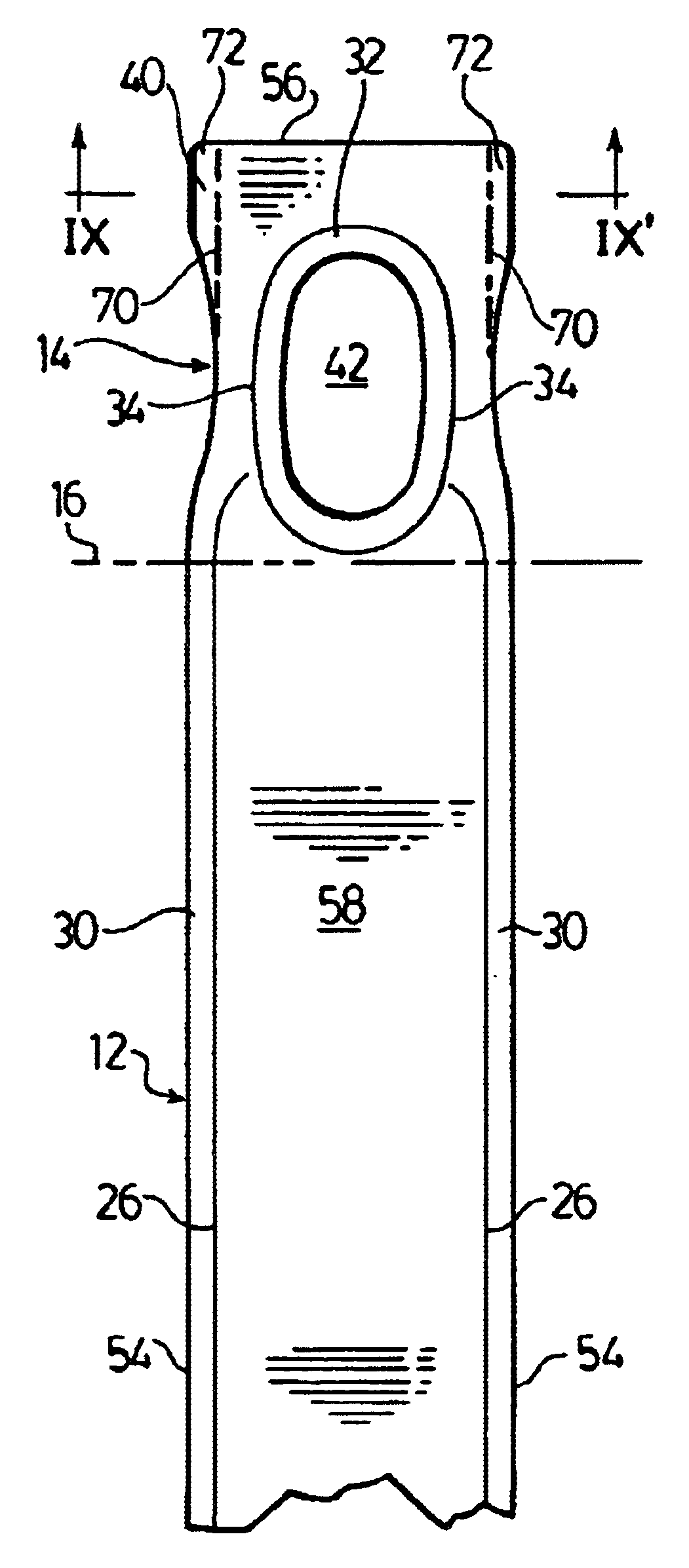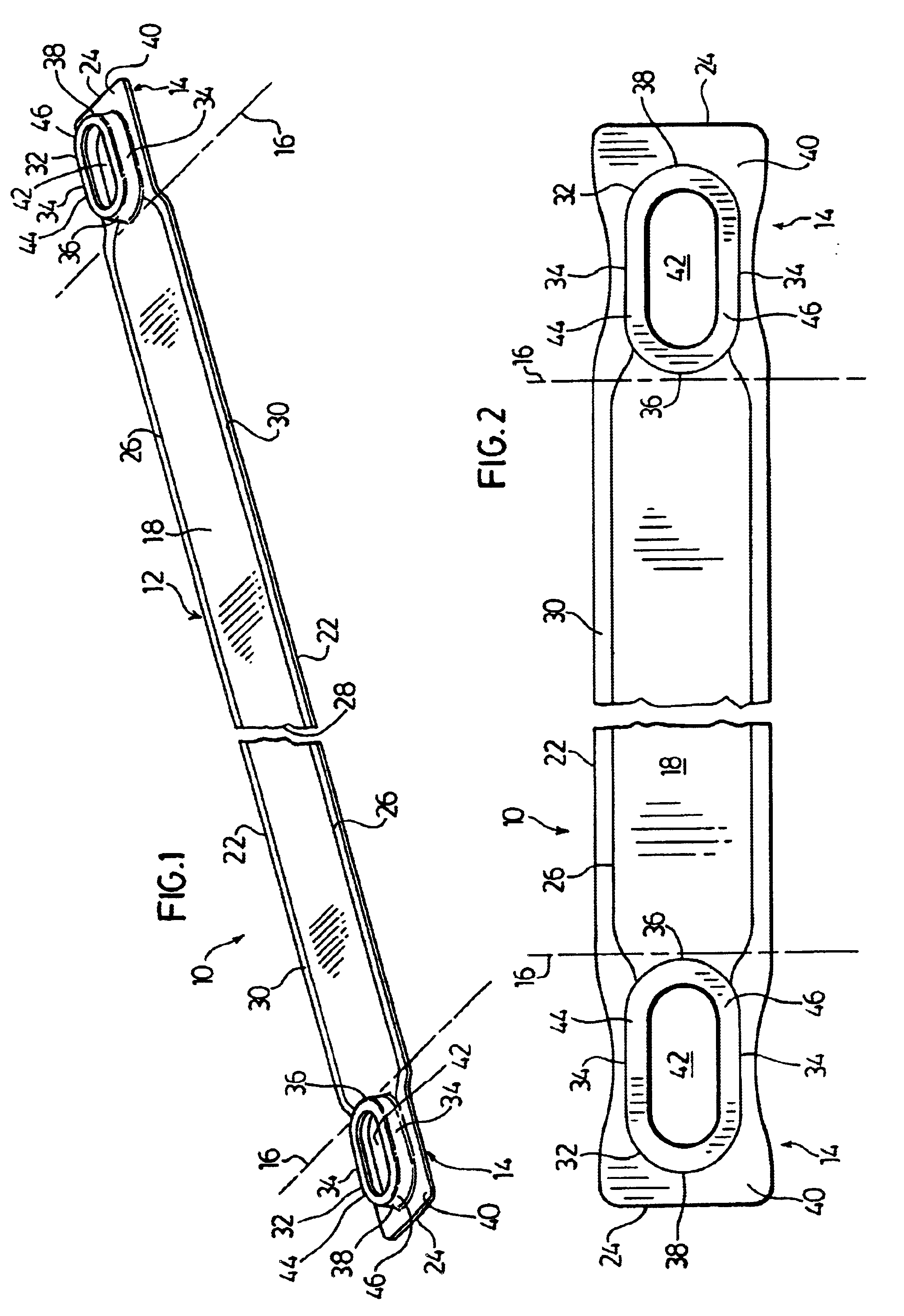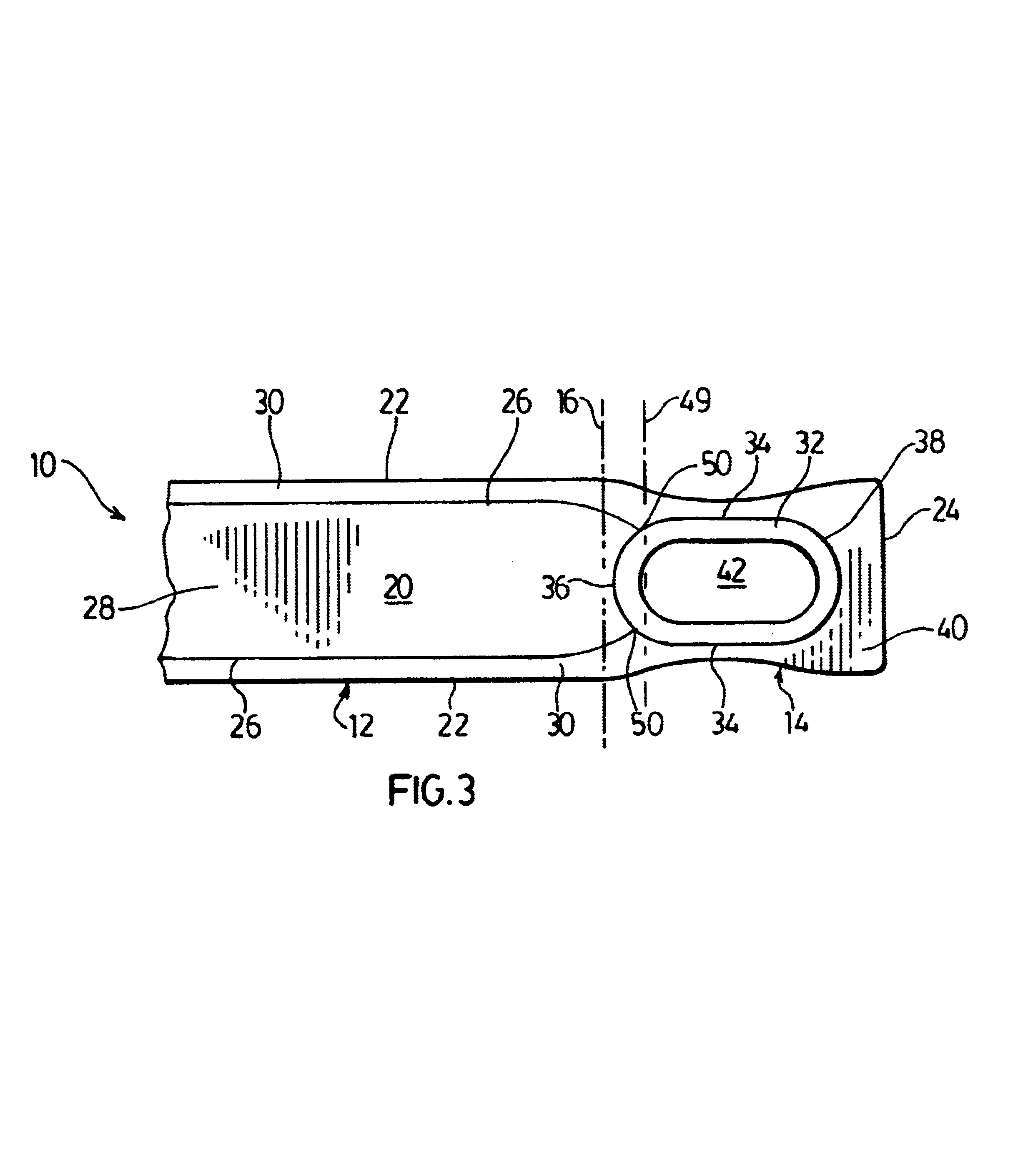Heat exchanger plates and manufacturing method
a technology of heat exchangers and manufacturing methods, applied in metal-working apparatuses, stationary conduit assemblies, tubular elements, etc., can solve the problem of needing to trim excess material along the edges of the plates
- Summary
- Abstract
- Description
- Claims
- Application Information
AI Technical Summary
Benefits of technology
Problems solved by technology
Method used
Image
Examples
Embodiment Construction
FIGS. 1 to 3 illustrate a preferred heat exchanger plate 10 according to the present invention. The plate 10 has an elongate central portion 12 located between a pair of end portions 14. Doffed lines 16 shown in FIGS. 1 to 3 indicate the approximate boundaries between the central portion 12 and the end portions 14.
The plate 10 has an upper surface 18 and an opposed lower surface 20, with elongate side edges 22 extending along the entire length of plate 10 and terminating at end edges 24. Extending along the side edges 22 of plate 10 are a pair of shoulders 26, these shoulders 26 defining a longitudinally extending fluid flow channel 28 extending along the lower surface 20 of plate 10. The fluid flow channel 28 preferably extends along substantially the entire central portion 12 of plate 10, and may preferably extend beyond dotted lines 16 into the end portions 14 of plate 10. The shoulders 26 are spaced from the side edges 22 so as to form flat peripheral side flanges 30 between the...
PUM
| Property | Measurement | Unit |
|---|---|---|
| length | aaaaa | aaaaa |
| width | aaaaa | aaaaa |
| height | aaaaa | aaaaa |
Abstract
Description
Claims
Application Information
 Login to View More
Login to View More - R&D
- Intellectual Property
- Life Sciences
- Materials
- Tech Scout
- Unparalleled Data Quality
- Higher Quality Content
- 60% Fewer Hallucinations
Browse by: Latest US Patents, China's latest patents, Technical Efficacy Thesaurus, Application Domain, Technology Topic, Popular Technical Reports.
© 2025 PatSnap. All rights reserved.Legal|Privacy policy|Modern Slavery Act Transparency Statement|Sitemap|About US| Contact US: help@patsnap.com



